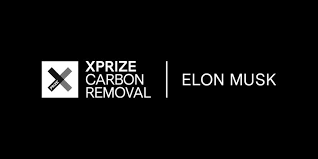Several weeks ago, Elon Musk of SpaceX and Tesla fame, joined forces with the XPrize to launch a competition with $100 million USD up for grabs. Entrants are asked to submit solutions to pull carbon dioxide (CO2) directly from the atmosphere or oceans at Gigaton levels with the end result, safe and minimally a century of permanent sequestration.
On the XPrize website it describes the problem in stark terms:
“The world’s leading scientists estimate that we may need to remove as much as 6 gigatons of CO2 per year by 2030, and 10 gigatons per year by 2050 to avoid the worst effects of climate change. For humanity to reach the Paris Agreements goal of limiting the Earth’s temperature rise to no more than 1.5˚(C) of pre-industrial levels, or even 2˚(C), we need bold, radical tech innovation and scale up that goes beyond limiting CO2 emissions, but actually removes CO2 already in the air and oceans. If humanity continues on a business-as-usual path, the global average temperature could increase 6˚(C) by the year 2100.”
Entrants have four years to demonstrate their carbon-negative solutions whether coming from nature, or through the application of technology. The competition guidelines are to be announced on Earth Day, April 22, 2021, with the closing date for submissions four years hence on Earth Day 2025.
To win the demonstrated solution must be scalable to 10 Gigatons per year CO2 removal by 2050. The initial demonstration should be capable of removing a ton daily. Cost per ton for removal will be one consideration by the judges in determining the winner. Another will be the length of time the CO2 will remain sequestered with a minimum goal of 100 years.
Winnings will be distributed as follows:
- After 18 months, the judges will select 15 teams who will each receive a $1 million milestone prize.
- Also after 18 months, 25 $200,000 scholarships will be awarded to selected student teams entered in the competition.
- The remaining $80 million will be divided among the top three submissions with first prize awarded $50 million, second, $20 million, and third, $10 million.
CO2 isn’t the only greenhouse gas that contributes to atmospheric warming. After all methane, water vapour, nitrous, and sulfur dioxide are other contributors that raise the global temperature. Methane, for example, is far more destructive but short-lived. Methane spikes have recently been noted as pushing up the atmosphere’s temperature albeit temporarily. That is not the cae for CO2 which lingers in the atmosphere for multiple millennia if not absorbed by natural sequestering processes such as the ocean, land, carbonate rocks, and plants.
Capturing CO2 by technological means is seen by many in the academic community as a fast way to help nature bring carbon in the atmosphere into balance at levels that don’t cause global temperatures to rise to a point that threatens our existence.
Capturing CO2 from industrial sources at the emission point is viable today. Scrubbers added to smokestacks, an older technology has been used to filter out smog-causing nitrous and sulfur dioxides from coal-fired thermal power plants. But adding CO2 extraction to scrubbers is something already happening. One such facility is located near Estevan, Saskatchewan, which has been operating a working carbon capture technology since 2014 at the SaskPower Boundary Dam coal-fired power station. This system has the potential to capture up to one million tons of CO2 when operating at full capacity. It works using solvents added to the smokestack scrubbers which capture the CO2. The gas is then compressed and pumped through pipelines into a stable sandstone formation 3.4 kilometers (2.1 miles) underground.
Another carbon capture working example is Quest, a Royal Dutch Shell project attached to an Athabasca Oil Sands Project near Edmonton, Alberta. Quest has the capacity to capture and store one million tons of CO2 annually. It captures the gas from upgrader operations and then compresses it before injecting into an underground saline reservoir two kilometers (1.25 miles) below the surface.
Then there is Carbon Engineering whose technology usees giant fans to draw in surrounding air which passes over thin plastic membranes coated with a non-toxic potassium hydroxide solution which chemically binds with the CO2 turning it into a carbonate salt. Additional chemical processes separate the salt from the solution which is then recycled. The salt is pelletized and heated to release the CO2 back into a gas which is then compressed and either piped underground or sent to industrial application users.
It will be interesting to see if the designers of these three projects enter the XPrize contest.
But wait. The Musk XPrize isn’t the only one aimed at extracting CO2. The NRG COSIA Carbon XPrize which was launched in 2015 is just coming to an end. This four-and-a-half-year competition has three Canadian entries among the 10 finalists. Submissions were due in December 2020. Each of the finalists received a share of a $5 million milestone prize. The grand prize involves two industrial streams: one focused on extracting CO2 from coal-fired power plants, and the second from natural-gas power plants. The CO2 extracted must be converted into products such as carbon fiber, or carbon-infused concrete. Each of the two grand prizes, is worth $7.5 million. We should hear from the judges shortly.
What makes this latest carbon capture XPrize stand out is the amount that Musk is offering the winners. No previous XPrize has reached a $100 million plateau. But it shouldn’t be a surprise that if it were to happen it would be something involving Elon Musk who takes big risks, and makes grand promises, and delivers.
















